Impressions from Potsdam and Leipzig
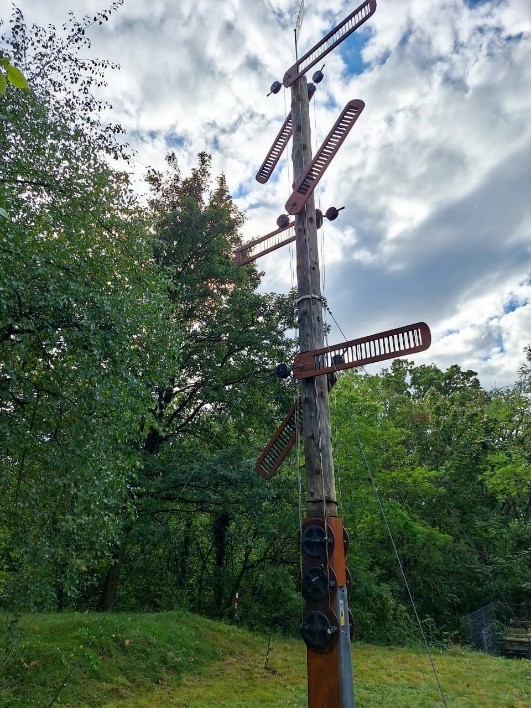
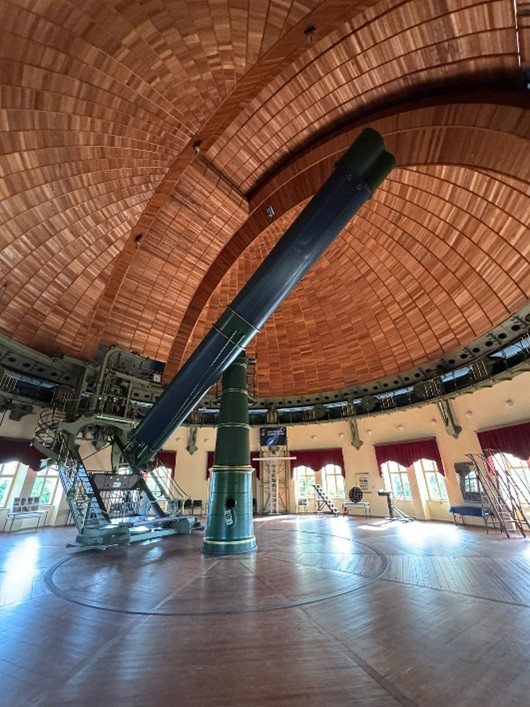
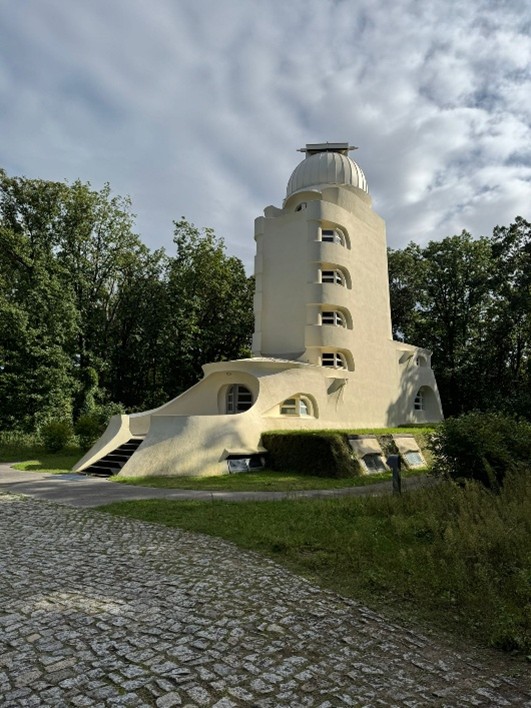
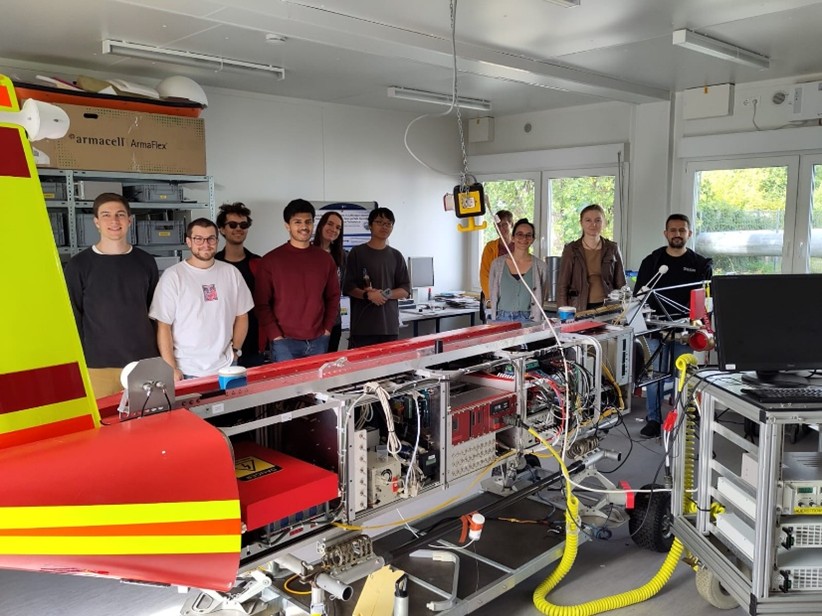
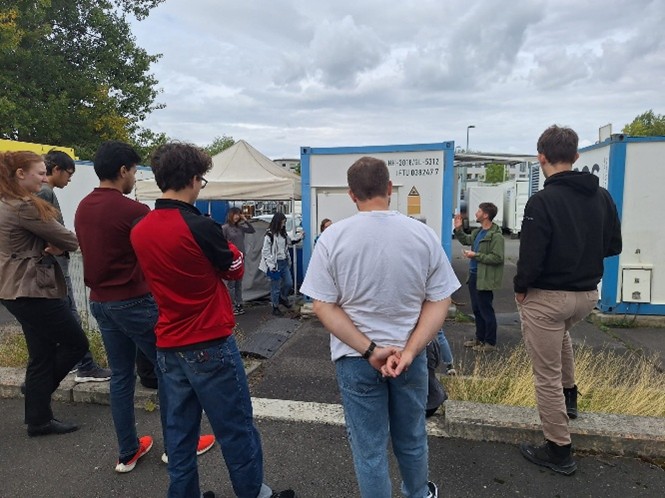
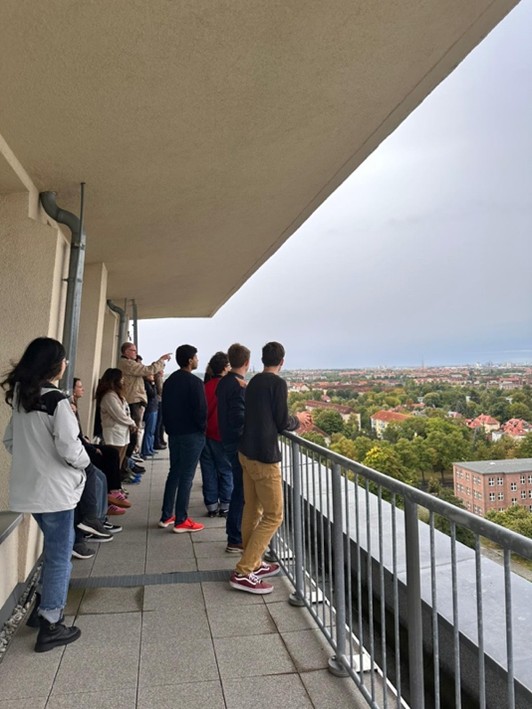
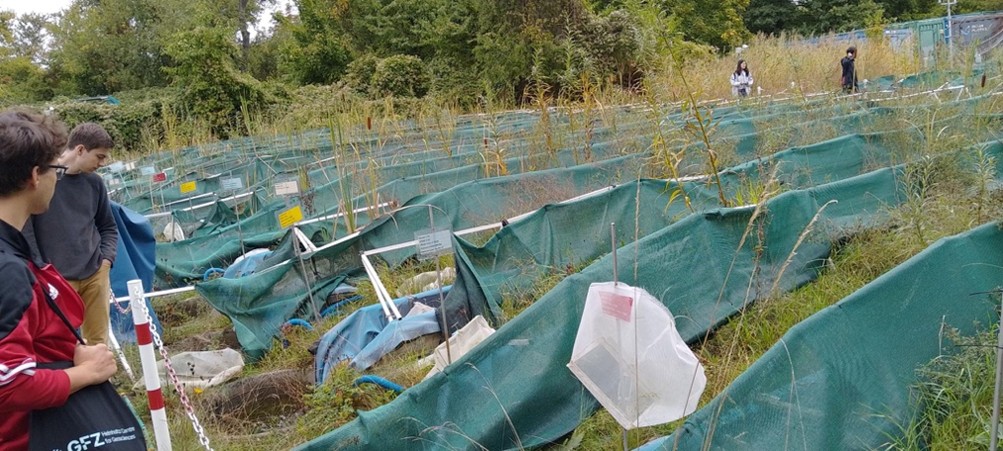
Field Trip of the Meteorology and Climate Physics MSc students
Day 1 - Scientific Heritage at Telegrafenberg
The 2025 MSc Meteorology and Climate Physics field trip, led by Dr. Marie Hundhausen and Prof. Dr. Corinna Hoose, began with a train journey to Potsdam. Upon arrival at Telegrafenberg, the group was welcomed by a guide who introduced several historic scientific buildings.
Among the first stops were the Magnetic Variation House and the Süring House, once home to the Meteorological Observatory. A highlight was the Great Refractor, inaugurated in 1899. It houses the world’s fourth-largest lens telescope, with an 80 cm diameter lens weighing around 300 kg. The telescope sits beneath a 200-ton rotating dome and has contributed to major discoveries, including the detection of interstellar matter.
The group then visited the Einstein Tower, a striking contrast to the surrounding neoclassical architecture. Designed by Mendelsohn and built with support from Erwin Finlay-Freundlich, the solar observatory aimed to test Einstein’s General Relativity by measuring gravitational redshift in solar spectral lines. Although initial results were inconclusive due to solar convection effects, the phenomenon was later confirmed in 1957.
Day 2 - Sustainability Research at RIFS Potsdam
The second day focused on the Research Institute for Sustainability (RIFS). Since 2023, RIFS has been part of the Helmholtz Association under the GFZ Centre for Geosciences. The institute promotes sustainability through scientific and cooperative research, engaging with policymakers, civil society, businesses, and local communities.
The day began with a presentation on global modeling and source attribution of tropospheric ozone. Using atmospheric chemical transport models and tagging techniques, the speaker explained how ozone patterns are analyzed and traced to their sources. The talk emphasized that while reducing local emissions remains essential, long-term air quality improvements require coordinated international efforts.
A brief overview of RIFS’s mission followed, highlighting its transdisciplinary and co-creative approach to sustainability. The institute fosters collaboration between science, policy, and society to develop practical solutions to global challenges.
The day concluded with a discussion on climate and sustainability in national and international processes. The session underscored the importance of integrating scientific insights into policy-making to address complex environmental issues effectively.
Day 3 - Cloud and Aerosol Research at TROPOS Leipzig
On the third day, the group visited the Science Park Leipzig, home to TROPOS, a research institute specializing in tropospheric studies, particularly clouds and aerosols.
The first presentation introduced ACTOS, a device designed for high-resolution in-situ cloud measurements. Unlike aircraft, which move too fast and cause droplet splintering, ACTOS is released from a helicopter into the cloud, enabling precise data collection under challenging conditions.
Next, researchers demonstrated a facility for studying secondary ice formation. The setup simulates interactions between supercooled droplets and a rimer, captured using sensors and cameras to analyze ice generation processes.
The group also learned about TROPOS’s LIDAR network, which includes both permanent and mobile units. These instruments measure vertical profiles of water vapor, dust, and biogenic particles, as well as cloud base heights using fluorescence techniques.
Further insights were gained in the Atmospheric Chemistry Lab, where large chambers simulate aerosol aging under conditions similar to the lower troposphere. The day also included talks on modeling extreme weather events such as hurricanes and wildfire-induced thunderstorms using the ICON model. A student shared her experiences from a semester abroad and participation in Arctic measurement campaigns in Svalbard.
Day 4 - Environmental Science at UFZ Leipzig
The final day took place at the UFZ (Helmholtz Centre for Environmental Research) in Leipzig. The visit began with a guided tour of the campus, including an introduction to the institute’s history and its role within the Helmholtz Association. With over 1,200 employees across three sites, UFZ plays a key role in Germany’s environmental research landscape.
One of the most impressive projects was the “Fluss-Experiment” in the ecotoxicology lab. This outdoor site features 47 artificial streams, or mesocosms, designed to study the effects of environmental toxins on aquatic ecosystems. The setup bridges the gap between controlled lab experiments and unpredictable field studies, allowing for statistically robust analysis of ecological impacts.
The PhD cohort “nanoINHALE” presented their interdisciplinary research on micro- and nanoplastics (MNPs). Their work explores the distribution of airborne MNPs, their effects on mammalian lung tissue, and the societal narratives surrounding their regulation and perception.
Three additional PhD projects were showcased: one focused on mapping renewable energy expansion across Germany to assess progress toward climate targets, revealing urban-rural and north-south disparities. Another examined bio-based carbon dioxide removal (CDR) technologies, including BECCS, peatland restoration, and forestry, evaluating their scalability and resource availability. The final project analyzed risks in Germany’s renewable energy system and how strategic decisions can mitigate them.
A heartfelt thank you to all the institutions that hosted us during this enriching journey - Telegrafenberg in Potsdam, RIFS, TROPOS, and the UFZ Leipzig. We are especially grateful to the many researchers and presenters who generously shared their time, expertise, and insights with us.
